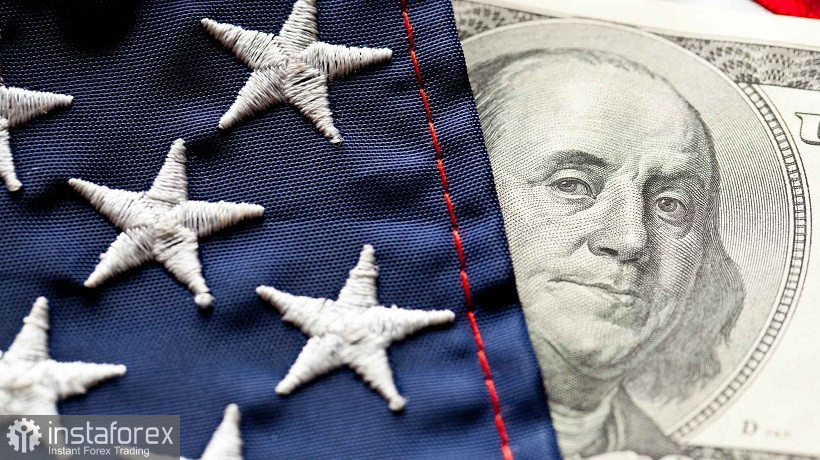The euro-dollar pair has already tested the 3rd figure today, having updated the five-year price low. Traders hastened to take profits, thereby provoking a corrective pullback. Nevertheless, the fact remains that EUR/USD sellers continue to open new price horizons for themselves, thanks to the strengthening of the greenback and the weakening of the euro.
Given the strength of the downward movement, the market is increasingly talking about achieving parity. More recently, thoughts about this seemed fantastic, after all, just 3 months ago, the pair was a thousand points higher, trading in a range of 13–15 figures. However, then the price rolled down quite sharply: in March it lost 250 points, in April—almost 500, and in May (at the moment)—another 200.
The rate of decline, and, most importantly, the duration of this process is surprising. After all, even during the first wave of the coronavirus crisis, in March 2020, when there was a similar hype around the dollar, the greenback gain was impulsive and relatively short-lived—in March, the bears marked a low at 1.0636, and in the same month retreated to the 10th figures. In the following months, despite the ongoing crisis, traders did not return to the annual bottom.
Today, the situation is radically different. Now we can talk about the systemic causes of the decline, which a priori cannot disappear or be leveled within a short period of time. Hence the protracted nature of the downward trend.
It is obvious that the basis for the EUR/USD decline was laid by the American regulator: the Federal Reserve turned out to be a kind of flagship for tightening monetary policy. At the same time, none of the central banks of the leading countries of the world is ready to raise rates at the same pace at the declared distance (at least for the current year). And even more so the European Central Bank, which still cannot form a unified point of view regarding the timing of the first round of monetary policy tightening.
Therefore, in this case, we can say that the Fed and the ECB "jointly" put pressure on the EUR/USD pair: the European Central Bank—with its indecision, the Fed—with an aggressive attitude.
The latest macroeconomic releases and comments from members of the US regulator provided additional support to the dollar. The combination of these fundamentals allowed the EUR/USD bears to take another step towards 20-year price lows. Recall that according to the latest Nonfarm Payrolls report, the US unemployment rate is currently in the area of 26-month lows, and the number of people employed in the non-agricultural sector increased by 428,000 in April (the same as in March). The level of average hourly wages in annual terms increased by 5.5%. As for inflation, here we are talking about ten-year records. Core PCE remains at 39-year highs, as is the overall consumer price index, which topped the 8% YoY mark last month for the first time in 40 years.
Against the background of such reports, the rhetoric of the Fed representatives continues to tighten, thereby providing additional support to the dollar. Just this week, John Williams, Loretta Mester, and James Bullard said they were ready to support the idea of a 50-point rate hike "in the next few meetings." They all have a vote on the Committee, so their position has allowed the EUR/USD bears to stage a new offensive. Sellers without any problems overcame the support levels of 1.0500 and 1.0450. Now they are trying to go below the target of 1.0400, fixing in the price range of 1.0350–1.0400.
At the same time, do not forget that the bears are approaching the 20-year lows (in 2017, the low was fixed at around 1.0339, the price was below this target in 2002), so many market participants may not risk moving below 0350–1.0339, to the base of the 3rd figure. After all, figuratively speaking, further is the "uncharted territory," which has been "uninhabited" since the beginning of the "zero" years. Therefore, in order to consolidate in this price area (at the bottom of the 3rd figure and below, under the mark of 1.0300), in my opinion, additional informational impulses are needed.
By and large, if buyers do not keep the price outpost in the 1.0350–1.0339 area, then the probability of reaching parity will increase significantly, and in the context of the medium term. But it will be possible to talk about this only after the price fixes at the bottom of the 3rd figure.
Thus, at the moment it is advisable to open short positions only if buyers of EUR/USD can organize a corrective pullback to the range of 1.0450–1.0490 (Tenkan-sen line on the D1 timeframe). It is risky to enter sales from current positions, as there is a risk of "catching" the price bottom.
 English
English 
 Русский
Русский Bahasa Indonesia
Bahasa Indonesia Bahasa Malay
Bahasa Malay ไทย
ไทย Español
Español Deutsch
Deutsch Български
Български Français
Français Tiếng Việt
Tiếng Việt 中文
中文 বাংলা
বাংলা हिन्दी
हिन्दी Čeština
Čeština Українська
Українська Română
Română

